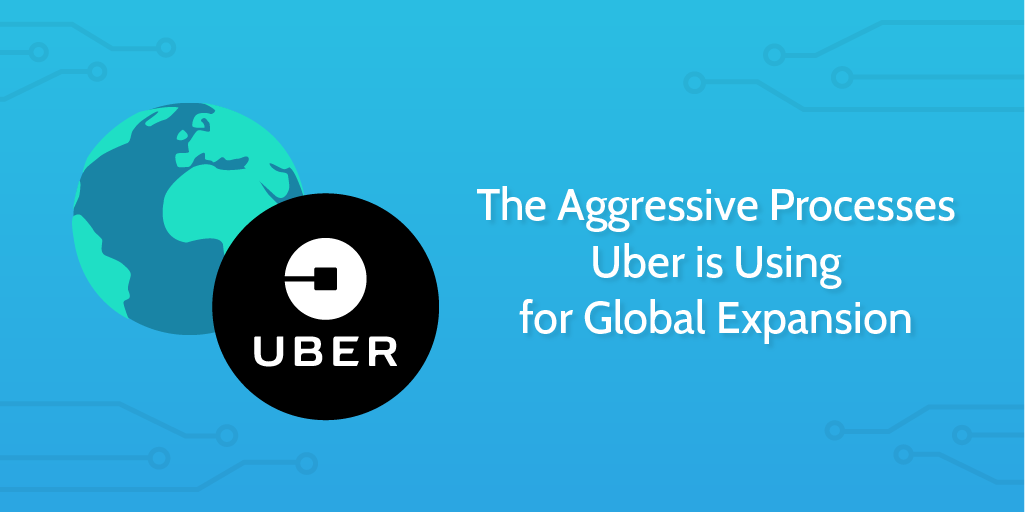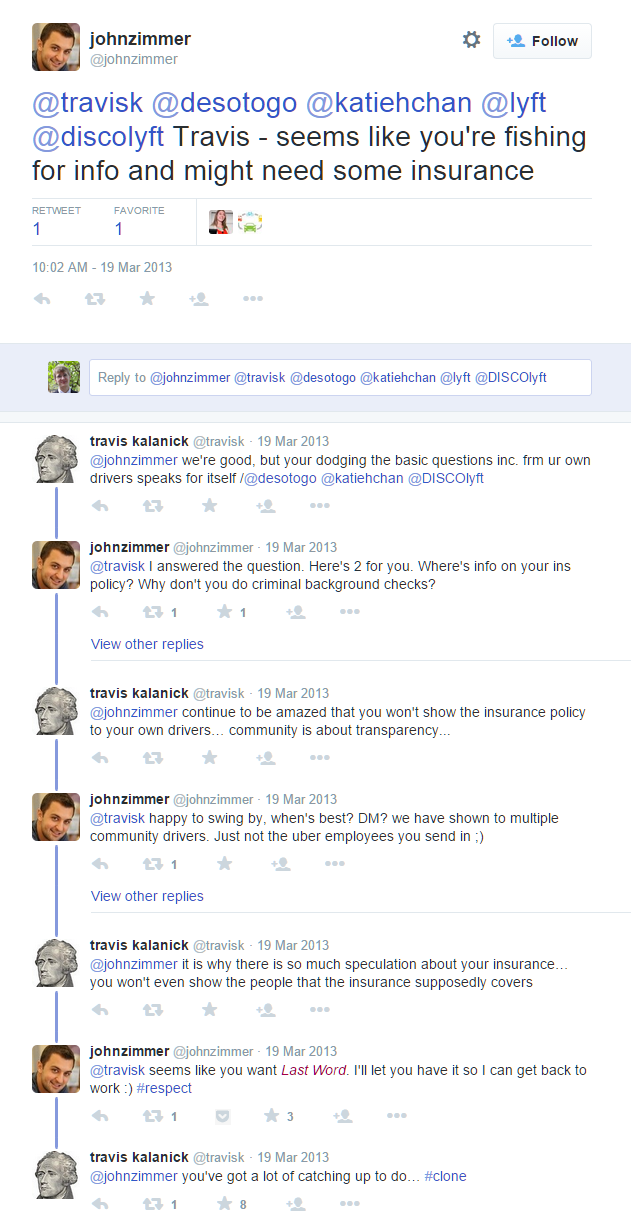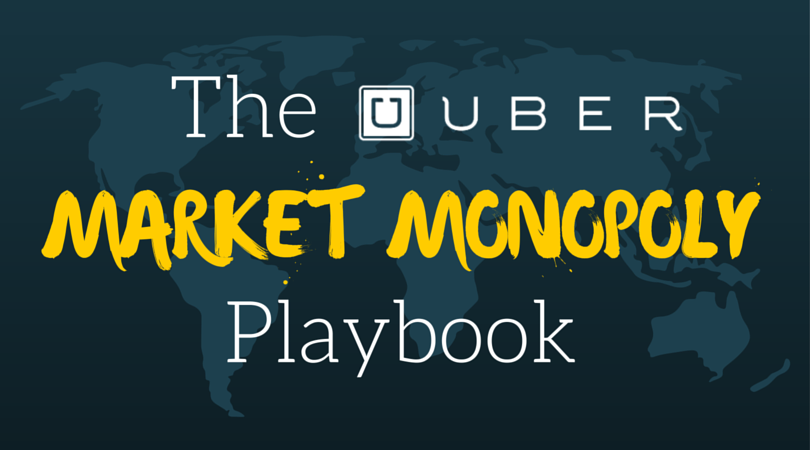 Uber is seemingly always in the news for something.
Uber is seemingly always in the news for something.
Right now the big stories are:
- An Uber-rival from China may be about to land $6 billion in investment from SoftBank.
- Uber wants to make 10% of its Oregon fleet electric by 2019.
- Uber aims for a future of driverless electric cars.
- Long distance haulage may be the next step for Uber’s expansion.
- Italy considers banning Uber in recent court case.
and… - Lyft capitalizes as Uber’s connection to Trump administration angers progressive voters.
It appears Uber is everywhere.
But how did Uber grow to such a large degree, particularly with laws and governments and embedded markets in their way? How did they end up with a potential valuation of $68 billion?
In this article, we’ll look at three key things:
- Where did Uber come from and what is its philosophy?
- How does Uber conquer a city?
- What steps does Uber take to recruit new drivers?
Uber’s counterculture beginnings
Uber’s cutthroat attitude towards expansion has gained founder Travis Kalanick as much fame as it has notoriety. The car hire app engages in ruthless guerrilla marketing, setting up in new locations at any cost.
Kalanick is a serial entrepreneur with a history of legal trouble. After dropping out of UCLA in 1998, he founded Scour Inc., a peer-to-peer file sharing service that ended up getting him sued for a quarter of a trillion dollars. After Red Swoosh, another file-sharing failure, Kalanick goes on to found Uber, the ridesharing and car hire app that has been the source of much controversy since its inception in 2009. The accusations that Uber fought a law that could help disabled customers are not even the gravest.
After Red Swoosh, another file-sharing failure, Kalanick goes on to found Uber, the ridesharing and car hire app that has been the source of much controversy since its inception in 2009. The accusations that Uber fought a law that could help disabled customers are not even the gravest.
Taking on what Kalanick describes as the ‘taxi cartel’ (the already established car service networks) back in 2009, Uber used ethically questionable business growth strategies to recruit Lyft’s drivers and lobbied governors worldwide to get laws rewritten in their favor.
With a total of $12.9 billion in investment since its launch, a rumored upcoming IPO, and an extremely profitable operation, where does all the money go and why is Uber constantly in need of new investment? Much of it is spent on infiltrating the saturated market using some very ‘interesting’ tactics.
An underground operation to sneak market share
Uber ‘Ambassadors’ – people employed to offer free rides to get around the law, as well as hire Lyft rides and steal its employees – can get paid $700 for each driver they recruit and come equipped with a supply of burner smartphones at their disposal. New drivers get smartphones if they need them, and you can bet that some amount of that $4 billion went into getting on the government’s good side.
When Uber targets a new city, it founds a new team with a separate entrepreneurial manager overseen by Kalanick, who moves to the city himself to work closely with the team. Until the operation is smoothly underway, Uber is advertised only by word of mouth – by its ambassadors who offer free rides to customers. Each city’s operations launch out of the blue to give the authorities no time to react before they are firmly established.
Uber vs. Lyft
Kalanick doesn’t like it when people try to put him out of business. Despite having a revenue 12 times that of Lyft, Uber is presumably doing all it can to discredit its rival – it shows from this tense Twitter conversation between the founders of the two companies.

Despite Lyft slashing its prices and providing a near identical service, Uber continues to be the ride-hailing service. Greg Muender, author of The Ultimate Guide to Medium and a driver who has worked for both companies argues that the only real difference between Lyft and Uber is the culture that surrounds them. For Uber, it’s an air of elitism (“Everyone’s Private Driver”), for Lyft, it’s a warm, human touch (“Your friend with a car”). It seems that nice guys finish last in the hailing app industry, at least.
Uber vs. the Law
Uber has managed to avoid any major setbacks so far, tiptoeing on thin ice through legal loopholes, but it has faced its fair share of legal threats from the ‘taxi cartel’. Operating in a similar gray area as Kalanick’s previous area of expertise, peer-to-peer file sharing, Uber’s right to do business is summed up nicely by Tony Bradley, writing in the Forbes article ‘Uber is the Napster of Driving-as-a-Service‘:
Uber may be illegal in some areas, but there’s nothing stopping me from just asking a friend to give me a ride to the airport or across town. If I kick in some gas money and a little extra for his time it doesn’t make it illegal. Uber is just like having a much larger network of “friends” to ask for a ride.
The authorities see it differently. NYC has impounded 500 Uber cars in the last three months. Miami laws state that car hire businesses cannot be booked less than one hour in advance and must cost $80 or more. Unsurprisingly, with the vast amount of influence (read: money) it seems to have summoned since 2009, none of this has been a problem.
When Uber launched in Miami it had no one on its side. It faced tension from the law, the government and the established network of taxis who were quite comfortable not having to compete with a highly backed, new and trendy firm. As Ron Miller puts it, ‘In spite of its issues, Uber remains the darling of venture capitalists, who won’t stop throwing gobs of money at the company’.
After a year-long feud, regulation dubbed ‘the Uber law’ passed allowing the firm to run its services in Miami. Another one down, the rest of the world to go.
While not flawless, Uber has clear-cut business growth strategies for successfully rolling out operations in new cities that involve infiltrating the existing market and outright refusing to comply with the law. How do they get away with it?
Uber’s expansion playbook explained
 Usually Uber follows a cookie-cutter process to establish itself. Entering a market without forewarning or even the legal right undoubtedly will attract some attention, but using this attention for free advertising seems to be working so far. Here’s how Uber has got away with it each time:
Usually Uber follows a cookie-cutter process to establish itself. Entering a market without forewarning or even the legal right undoubtedly will attract some attention, but using this attention for free advertising seems to be working so far. Here’s how Uber has got away with it each time:
1. Secretly enter a new market
Recruit drivers and customers through company ambassadors who gain commission and Uber credit. Uber can afford to pour a lot of money into expanding its operations because of the insane amount of VC backing it generates. Offering first-time customers free rides is a way to exploit a legal loophole for promotion. After the government realizes what Uber is doing, they often have something to say…
2. Ignore threats of legal action
By this point, Uber can make a strong case for itself, saying that customers want it to be there. Thanks to the leverage from offering free rides, Uber has enough of a customer base already to brush off any threats, and enough money to not be scared.
This has lead to a couple of high-profile bans – they were banned from Spain in 2014 – but Uber has had the resources to re-enter these markets with slight tweaks to the service they offer. After all, once you have the network on the ground, it’s much easier to be agile in repurposing your services to suit it.
3. Ignore government sting operations
After Uber ignores all warnings, the government typically launches a sting operation, threatening any driver caught working for Uber with a hefty fine. Uber eases its driver’s fears, telling them that they will cover any penalties, legal costs or other repercussions using the massive sums of money invested in them.
4. Start lobbying the state government
Uber employees whose sole job it is to gain political influence start pushing for regulations that legalize its operations. In almost all cases, this will work and Uber will be given the chance to gain a firm foothold.
This can be done through traditional lobbying avenues – it spent $1.36m on US Federal lobbying in 2016 – within the halls of local governments, but it’s also done on the streets. Through recruiting familiar faces, like Dragon’s Den star W Brett Wilson, to drive an Uber – it creates a buzz around the city. Team this with efforts like giving users a free ride for donating $5 to a local charity, Uber creates a very positive public image and can bring on board the support of influential local charities and other key community stakeholders.
5. Monopolize the market
At this point, Uber will hire more drivers, pour more money into promotion (not so underground this time) and go on to monopolize the city’s private car hire market.
Well-publicized PR stunts like delivering puppies and ice cream are always going to draw a crowd, but check out this video below to see some of their early tactics and how they implemented them:
6. Undermine the competition
According to Lyft, one of the more sneaky business practices Uber has employed is disrupting their competitors’ services. Allegedly, people working for Uber have ordered and canceled over 5,000 rides from Lyft – creating a demand which Lyft struggled to meet, therefore making Lyft appear slower and less reliable to normal users. Uber denies these allegations, of course.
More than this, Uber are known for their recruitment of drivers from other networks, sometimes offering up to $1000 sign up fees to drivers from existing competition.
How Uber recruit new drivers
We’ve discussed in detail the macro efforts Uber has put into growing their company and driving their business forward (pun intended).
But no matter how aggressive you are or how innovative your growth hacks, if your internal systems are not up to scratch then your company will come up against problems eventually.
One of the things which separated Uber from traditional taxi networks was the use of automated technologies. This allowed Uber to be more efficient, to give more guarantee and security to riders, and to create scalable systems which allowed for it to generate orders of magnitudes more capital than A1 Taxis at the end of your street.
Uber has also even employed drones to advertise to drivers, like this one:

Uber has implemented these tech-first approaches to attracting drivers as well as riders. Aside from the sneaky stuff mentioned above, what it has is a sleek hiring, recruiting, and onboarding system:
1. Automate the recruitment process
New potential drivers are directed to the Uber portal to go through the steps of signing up and vetting. Uber now has increased competition within the taxi-not-a-taxi economy, but initially, this strategy was inexplicably more efficient than the processes used to onboard regular taxi drivers. It reduces necessary labor and makes it more convenient for the driver. A human touch with automated insides.

2. Begin weeding out the poor candidates
The first step of the recruiting process involves being presented with a variety of information about the company. You have to go through their frequently asked questions where they try to clarify as much as possible before you even formally begin. Instead of doing what many businesses do and trying their best to get anyone and everyone on board, Uber presents this more refined model. In doing so, potential drivers who would waste time become weeded out and screened at the very first stage. Self-deselection, no less.
3. Sign them up and gather their data
Once you’ve decided you have what it takes to be an Uber driver, you select to sign up and are taken inside the portal proper. Here you’re asked for all the information you would expect:
- Personal information like name, address, social security, etc.
- Vehicle information including car model, age, and insurance status.
- Previous experience and applicability for the role.
4. Crunch the info and send in a human
This is the clever part. The portal takes all the information given and uses this to run background checks and other investigative elements. It then decides whether you would be a good fit for Uber and whether you should be taken aboard. If everything comes up positive, then – and only then – are you put through to a real person on the end of a phone. A real person who relies on the effectiveness of automated systems, like this chap:

By automating so much of the process, Uber reduces costs and increases the scalability of the platform. As innovative as its grand global expansion plans might be, it is operational details like this one which serve to push Uber ahead of the competition and cement its place as market leaders.
Why do Uber’s business growth strategies work?
Yes, it works because it has a lot of money thrown at it, but at its core it is a process and a process built on the backs of many other successful processes. A tried and tested, documented process that is applied internationally with the same outcome: success.
Uber’s full playbook has many more processes, all informed by experience and refined by employees, updated as they go to include anything that could make the process more efficient, the same as we do at Process Street. Unlike Lyft, Uber doesn’t pretend to be friendly. It uses its efficiency to promote a glamorous aesthetic, and, while only eight years old, has the finely-tuned processes of a company well beyond its years.
Are you a regular Uber user? Or have you been an Uber driver? Let us know your experiences with Uber in the comments below!







Adam Henshall
I manage the content for Process Street and dabble in other projects inc language exchange app Idyoma on the side. Living in Sevilla in the south of Spain, my current hobby is learning Spanish! @adam_h_h on Twitter. Subscribe to my email newsletter here on Substack: Trust The Process. Or come join the conversation on Reddit at r/ProcessManagement.